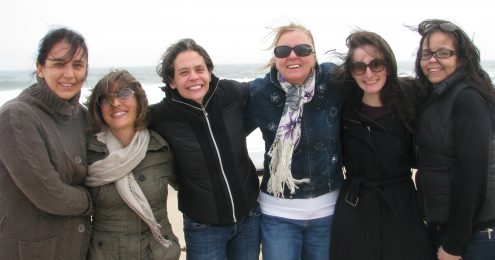Have you ever gone to a board retreat?
Close your eyes for a moment and think back to the last one you attended.
Maybe it was last year, maybe a few years back. Try to remember the basic contours of the agenda. Or better still, something that changed as a result.
Struggling?
Get in line. Here are some things board members have told me about their most recent board retreats:
“It was fine.”
“I wonder if we ever did anything with the flip chart stuff and the action items.”
“I remember we had a really great strategic visioning conversation, though I’m struggling to remember the details and I have no idea if anything actually came of it.”
You’ve invested all this time and money. Your board members gave up a Friday night and full day on Saturday. And yet, just months later, they can barely even remember the agenda, much less any outcomes.
Wow. This is NOT OK!
Look, here’s the truth. Most board retreats really are just fine. They’re not disasters. If they were, board members would actually remember a whole lot more about them!
Really, though, most board retreats are wildly mediocre.
But we can do a lot better.
We can create board retreats that are valuable, memorable, and actionable.
That leave board members with a sense of camaraderie, pride about the work, and an urgency to be great ambassadors.
Today, I offer some practical advice and a downloadable agenda for a retreat that does exactly that.
==> Download the sample five-star board retreat agenda here.
FIVE THINGS THAT DERAIL A BOARD RETREAT
Let’s start with the most common reasons board retreats don’t achieve what they’re supposed to. You should make sure to do the opposite.
1. No Definition of Success. It’s not enough to just meet. You need to know, going in, the answer to the question, “This retreat will be a success for our organization if….”
2. The Board Assumes the Executive Director Is Responsible for the Agenda. I will never work on a board retreat if I don’t first meet with both the ED and Board Chair and feel a sense that they are co-pilots in designing this retreat.
3. No Icebreakers. Sorry to break it to you, but a critical component of a retreat is to build a team, for board members to get to know and appreciate one another. Now I never call an “Icebreaker” an “icebreaker”, but a board that refuses to engage in team building won’t have a great retreat.
4. No Space on the Agenda to Dig into a Substantive Challenge or Opportunity. If your ED doesn’t want the board to dig into something meaty at a retreat, set her straight. A great board agenda taps into the passion and intellect of board members to tackle a big issue – a change in the sector, a need for a strategic pivot, a deep dive look at whether the board you have is the board the organization needs. A simple “show-and-tell” by the ED about how great everything is a retreat-killer.
5. No Facilitator or Someone Who Simply Directs Traffic. Related to #4, if your facilitator is not bringing substance to the table, if s/he can’t challenge, poke and prod to get that meaty conversation to a very engaging place, it won’t get there. If you interview someone who focuses on how she keeps the queue, or how she keeps the retreat on time and follows the agenda closely, and you believe these are the important things, there are better ways to invest board members’ time and organizational dollars.
So that’s what you shouldn’t do. Here’s what you SHOULD do….
FIVE KEYS TO A SUCCESSFUL BOARD RETREAT (PLUS A BONUS)
1. The “WHY” is clear and strategic. When I say “strategic,” I mean it broadly. It could mean that the board really needs to dig into its own makeup – how to transform the board to reflect the changing needs of your organization. Or perhaps there is significant change in the sector that will impact your program strategy. You talk about it some at your regular board meetings, but it demands a deeper dive.
Or maybe you’ve come to a point where you really need to dig into how to diversify your revenue.
There should be something central to the retreat that everyone agrees is important and requires a full conversation.
2. Each board member feels a sense of ownership of the success of the retreat. Every board member should be asked a few key questions ahead of time and the answers should shape the design of the agenda:
- This retreat will be successful for our org if….
- This retreat will be successful for me if….
- The 3 most important goals for this retreat should be….
- Share your ideas for possible agenda items that would help us to meet the goals above.
3. The work must come to life at the retreat. There are lots of ways to do this but talking about it is NOT enough. Not during a full day your board members have donated. They need to see it; they need to feel it. It must engage them at an emotional level.
4. The staff must authentically engage and value the input and insights of the board members. One way is to do this is for the staff to tee up an issue and then outline possible paths or raise a series of questions that the board and staff can then grapple with together.
5. The board should leave feeling a real sense of camaraderie with fellow board members. Sorry to break it to you folks but this is where icebreakers and team building comes in. Gotta do it. BUT that doesn’t mean they have to be cheesy.
BONUS: Task a small group of board and staff with follow up from the retreat. Updates should be part of board meeting agendas, perhaps quarterly. These should be real updates with real evidence of momentum.
THE REAL BONUS
A sample agenda for a five-star board retreat!
–> Download the sample five-star board retreat agenda here.
I’ve done quite a few of these over the years and I have learned a bit about what works well (and what just doesn’t). I hope you find the sample with annotations to be helpful as you consider investing time and energy into a board retreat.
Done well, they are a critical element of ensuring that your board is engaged, enriched and informed, enabling them to be the high functioning board “engine” your organization – and the community you serve – need and deserve.



